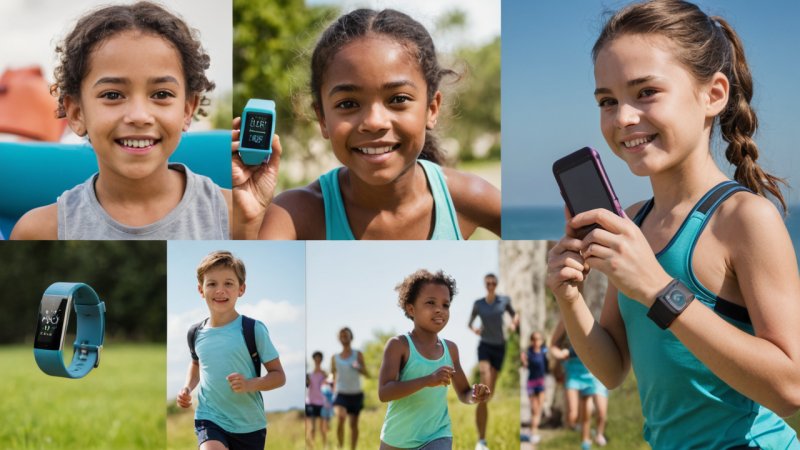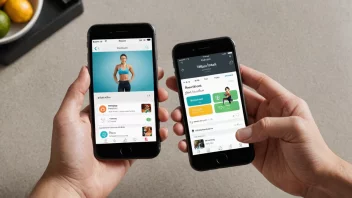In the age of technology, wearables have become a popular choice for parents looking to monitor their children's health, safety, and activities. From fitness trackers that motivate kids to stay active to smartwatches that ensure connectivity, the options are vast. This guide aims to help parents navigate the complexities of choosing the right wearable device for their children, considering factors such as age, functionality, design, and safety features. Whether your child is a toddler or a teenager, this article will provide insights to make an informed decision.
Understanding the Different Types of Wearable Devices
Before diving into the selection process, it's essential to understand the various types of wearable devices available for children. Each category serves different purposes and features distinct functionalities:
- Fitness Trackers: Designed to monitor physical activity, heart rate, and sleep patterns, fitness trackers can help kids develop healthy habits.
- Smartwatches: These devices combine the functionalities of a traditional watch with additional features such as messaging, calling, GPS tracking, and various apps.
- Health Monitors: Some wearables focus specifically on health metrics, tracking vital signs, and offering insights into overall wellness.
- GPS Trackers: Ideal for younger children, these devices provide real-time location tracking, ensuring parents can keep tabs on their child's whereabouts.
Factors to Consider When Choosing a Wearable Device
When selecting a wearable device for your child, consider the following factors:
1. Age Appropriateness
The age of your child plays a crucial role in determining the right wearable. For younger children, GPS trackers and simple fitness bands are often more suitable, while older children and teens may benefit from more advanced smartwatches with additional features.
2. Functionality
Assess what you want the device to accomplish. If your goal is to encourage physical activity, a fitness tracker with gamification features might be ideal. If you want to maintain communication, a smartwatch that includes calling and messaging capabilities may be more appropriate.
3. Design and Comfort
Children can be sensitive to the design and comfort of wearable devices. Look for options that are lightweight, adjustable, and available in appealing colors and styles that your child would enjoy wearing.
4. Battery Life
Battery life is another critical consideration. Devices with longer battery life will require less frequent charging, making them more convenient for busy families.
5. Safety Features
Safety is paramount, especially for younger children. Look for devices that offer features like emergency SOS alerts, parental controls, and geofencing capabilities to ensure safety while allowing some independence.
6. Durability
Children can be rough on their belongings, so durability is vital. Opt for wearables that are water-resistant and made from robust materials to withstand the wear and tear of everyday use.
Popular Wearable Devices for Children
Here are some popular wearable devices that have gained traction among parents and children alike:
1. Fitbit Ace 3
The Fitbit Ace 3 is a fitness tracker designed specifically for kids aged 6 and up. It tracks active minutes, steps, and sleep, while also featuring fun challenges and rewards to motivate children to stay active.
2. Garmin Bounce
The Garmin Bounce is a smartwatch that combines fitness tracking with safety features. It allows parents to track their child's location, set up geofencing alerts, and communicate through text messaging.
3. TickTalk 4
This smartwatch is particularly popular among younger kids. It offers video calling, messaging, and GPS tracking, along with parental controls to ensure a safe experience.
4. Apple Watch SE (GPS)
For older children and teens, the Apple Watch SE is an excellent option. It includes fitness tracking capabilities, customizable watch faces, and seamless integration with the Apple ecosystem for communication and entertainment.
Setting Up and Using the Wearable Device
Once you've chosen the right wearable device for your child, setting it up properly is essential for maximizing its benefits:
1. Create a Shared Account
Most wearables require an app to track data and settings. Create a shared account with your child so that both of you can access the information and communicate effectively.
2. Familiarize Your Child with the Device
Take the time to teach your child how to use their new wearable. Explain the features, how to charge it, and the importance of keeping it safe.
3. Set Goals Together
Encourage your child to set achievable goals, whether it's increasing their daily step count or completing a fitness challenge. Celebrate their accomplishments to motivate them further.
4. Monitor Usage and Data
Regularly check in on the device's data to ensure your child is using it correctly and safely. Discuss their activities, achievements, and any concerns you may have based on the collected data.
Potential Downsides of Wearable Devices
While wearable devices offer many advantages, there are potential downsides to consider:
1. Screen Time Concerns
Some parents may worry about increased screen time due to smartwatches and fitness trackers with apps. Balance technology use with outdoor and physical activities.
2. Privacy and Security
Wearables can collect data that may raise privacy concerns. Ensure that the device you choose has robust security features and that you understand its data-sharing policies.
3. Dependence on Technology
Children may become overly reliant on technology for motivation. Encourage a healthy balance between using wearables and developing intrinsic motivation for physical activity.
Conclusion
Choosing the right wearable device for your child involves careful consideration of age, functionality, design, and safety features. By understanding the different types of wearables and evaluating your child's needs and interests, you can select a device that enhances their health, safety, and overall well-being. With the right approach, wearable technology can become a valuable tool in helping children develop healthy habits and maintain a balanced lifestyle.






